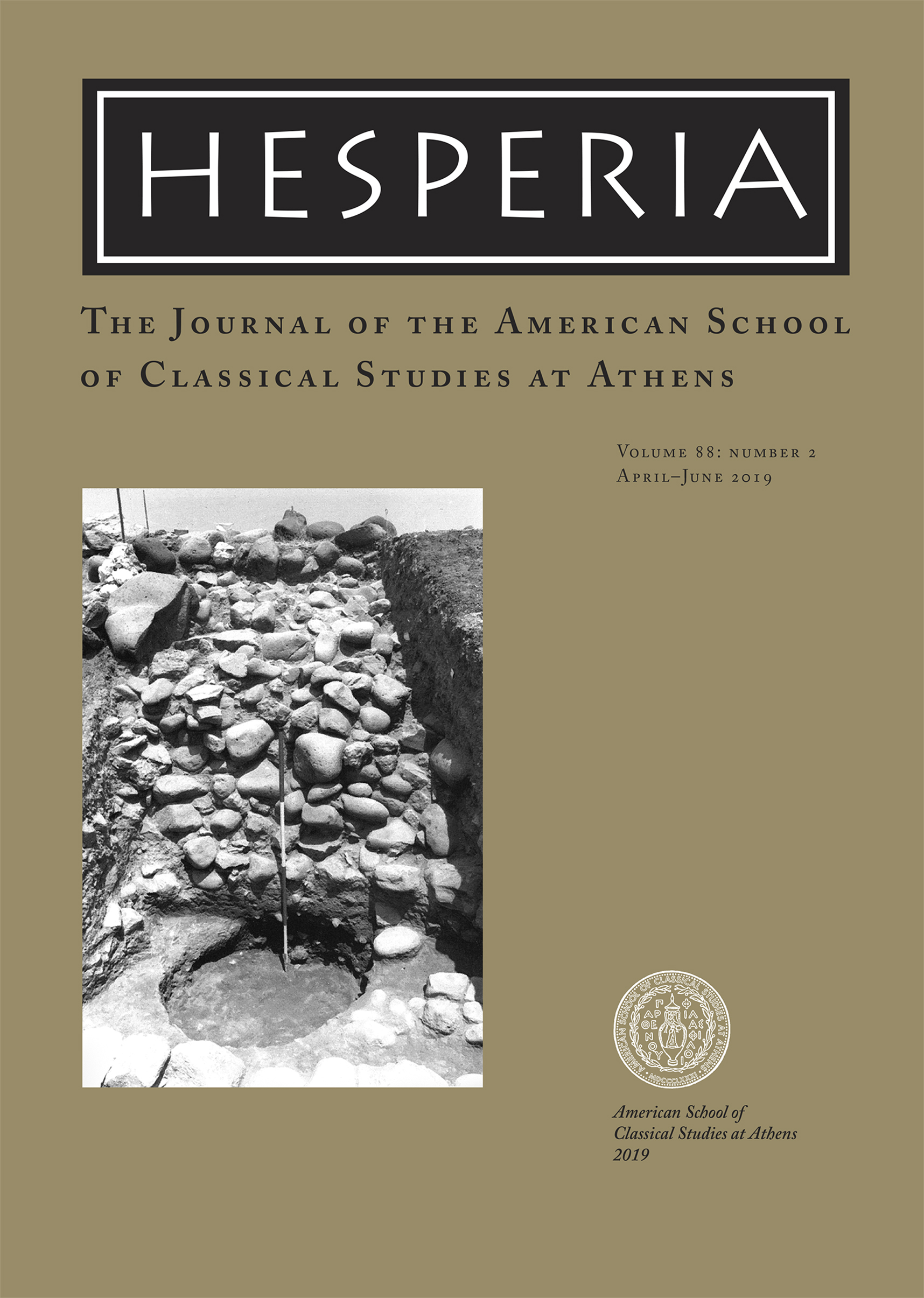Hesperia 88.2 Now Online!
 The American School of Classical Studies at Athens is pleased to announce the publication of Hesperia 88.2. Topics in this issue include a study that examines a LH IIIB ceramic deposit from Phylakopi, an exploration into the evidence for food markets in Roman Greece, the presentation of the architecture and ceramics from the South Basilica at Polis on Cyprus in the Late Roman period, and a look at the history of the site of Butrint during the Venetian and Ottoman periods.
The American School of Classical Studies at Athens is pleased to announce the publication of Hesperia 88.2. Topics in this issue include a study that examines a LH IIIB ceramic deposit from Phylakopi, an exploration into the evidence for food markets in Roman Greece, the presentation of the architecture and ceramics from the South Basilica at Polis on Cyprus in the Late Roman period, and a look at the history of the site of Butrint during the Venetian and Ottoman periods.
Subscribers can read the issue online at JSTOR, which now hosts all current issues of Hesperia as well as an archive of past volumes. The printed version will be mailed shortly.
Mycenaeans on Melos? Reassessing a Late Bronze Age Ceramic Deposit at Phylakopi, by Jason W. Earle, looks at a deposit, PK pit 1, that was revealed during the course of the 1974–1977 excavations at the site of Phylakopi on the Cycladic island of Melos. Found beneath the city wall, the deposit has hereto been considered only in terms of its importance for understanding the chronology of the town’s fortifications. Reassessment of this deposit, however, demonstrates its importance for understanding the nature of pottery production and consumption at Phylakopi and the phenomenon of Mycenaeanization on Melos.
Macella and Makelloi in Roman Greece: The Archaeological and Textual Evidence, by Vasilis Evangelidis, presents the archaeological and textual evidence for buildings in Roman Greece that have been identified as food markets. Such buildings often appear in inscriptions or texts under the name “makellos,” which seems to be the Hellenized form of the Latin “macellum.” A brief survey of the various sites where these buildings have been discovered or are known, mostly from inscriptions, is followed by a discussion that focuses on their possible usefulness as signs of Italo-Roman influence.
The South Basilica at Polis on Cyprus, by William Caraher, R. Scott Moore, and Amy Papalexandrou, focuses on the architecture and ceramics from the earliest phases of the South Basilica of Polis on Cyprus, a basilica that transitioned from a wood-roofed to barrel-vaulted church in the 7th century A.D. The excavations produced an assemblage of Late Roman fine wares that indicates the site was an entry point for Cypriot Red Slip ware onto the island. This assemblage complicates long-standing arguments for Late Roman decline and identifies the construction of a mid-sized and well-appointed basilica on Cyprus as characteristic of the transformation of Hellenistic and Roman cities into prosperous trade centers during the 6th and 7th centuries.
The Abandonment of Butrint: From Venetian Enclave to Ottoman Backwater, by David R. Hernandez, examines Butrint under Venetian and Ottoman rule during the period of its final settlement and subsequent abandonment, before the start of archaeological excavations (A.D. 1386–1928). On the basis of excavated Venetian houses and later burials at the site of the Roman forum, it can be argued that the Republic of Venice abandoned the Butrint headland after Süleyman the Magnificent sacked the city in 1537 and that Butrint was never resettled thereafter due to environmental adversities posed by malaria and emergent wetlands. Plague, border-zone dynamics, and state decay also exacerbated local conditions. Throughout its abandonment, however, Butrint and its environs remained economically active and strategically important, primarily to Corfu.
Click here to subscribe to Hesperia. In addition to receiving printed issues and online access to Hesperia, subscribers also receive complimentary online access to Hesperia Supplements, and Agora and Corinth volumes.
Hesperia welcomes submissions from scholars working on all aspects of Greek material culture, including archaeology, art, architecture, history, epigraphy, and related studies. Further information about the journal, including instructions for preparing manuscripts for submission, can be found on our website.